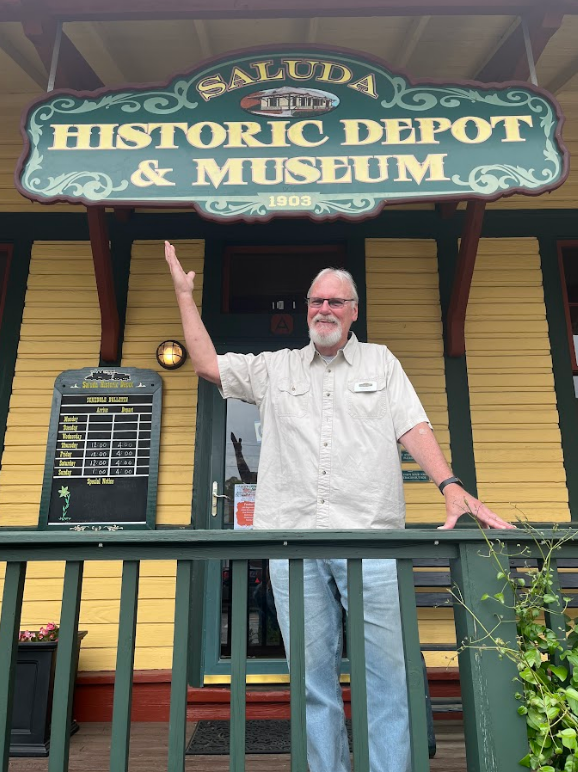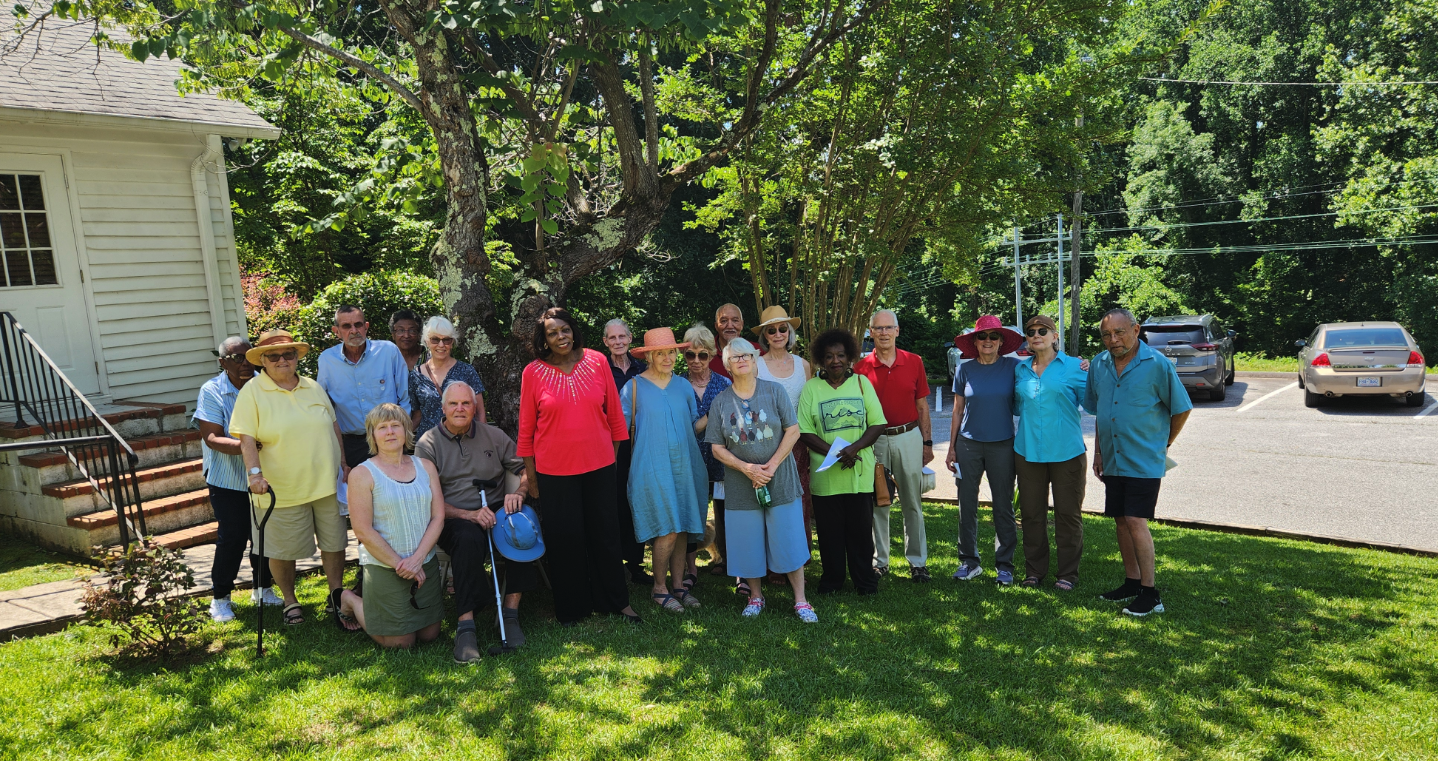Life in our Foothills July 2024 – Chugging on – Saluda Historic Depot and Museum
Published 1:44 pm Thursday, July 11, 2024

- Saluda Historic Depot Board Chairman Mike Reeves
|
Getting your Trinity Audio player ready...
|
In the late 19th and early 20th centuries, a railroad was like an artery pumping life into a community, and the train depot was the heart.
“The depot was the place of the day,” says Mike Reeves, board chairman of the non-profit Saluda Historic Depot and Museum. “Everybody came to the depot. They wanted to get their mail. They wanted to get the latest gossip. They wanted to meet their friends. Family would come up to visit. Freight would come and go. Goods would come in for the town to thrive.”
Saluda’s old train depot, which is listed on the National Register of Historic Places, was all those things.
It all began in the early 1800s with the idea of a railroad connecting the port of Charleston to the growing industrial region of the Ohio River Valley. When railroad engineers reached the mountainous terrain beyond Tryon, they thought about going around to the west but decided that would require too much track and too many tunnels, and they determined that the ground to the east where the I-26 corridor is today was too unstable. They chose to go through the Pacolet River valley, a route that begins at the bottom of the Melrose Mountain at 1,081 feet and climbs to what would become the town of Saluda, cresting at an elevation of 2,097 feet. It would be the steepest railroad grade in the country.
The first passenger train of the Asheville and Spartanburg Railroad chugged up the grade on July 4, 1878, entering a small, rural community known as Pace’s Gap. By February 1881, the railroad had brought so much growth and prosperity to Pace’s Gap that it was chartered as the town of Saluda.
“It was fueled completely by the railroad,” says Reeves. “When the railroad came through here suddenly there’s all these passengers. Had the railroad not been here, Saluda wouldn’t be here.”
In 1903, the railroad replaced a small depot building with a larger one to handle the growing number of passengers. The same year it was built, the railroad brought 321,000 people to Saluda, and more than a half dozen trains stopped in town every day. Many passengers were coming from Charleston and Columbia to escape the summer heat.
“Saluda was cooler. The air was nice and clean. You could breathe. You could sleep at night, so it was a big deal to come up to the mountains. It became a very huge tourist attraction to come up here,” says Reeves.
Over the decades, as automobile travel became more popular, demand for passenger rail service declined. The last passenger train to come through Saluda was the Carolina Special in 1968. Southern Railroad began decommissioning its depots, including the one in Saluda, which was destined for demolition. The railroad offered to sell the depot to the City of Saluda for $1 with the condition that it be moved from its original location west of town. In 1983, the Eargle and Talbot families purchased the building from the city for $1,000 and moved it to its current location on Main Street. As a condition of the sale, the city asked that the building be restored and preserved, and the Eargle and Talbot families obliged.
“The idea is they were going to have a depot district. They were going to have a museum,” says Reeves. “It didn’t happen. Instead, it turned out to be retail.”
In 2015, the depot came up for sale again.
“A bunch of residents decided that we need to save this,” says Reeves. “This is our heritage. This is our history. We’ve got to do something. We can’t just let it go away.”
In June 2016, that group of Saluda citizens created a 501(c)3 non-profit organization named the Saluda Historic Depot to purchase the building and create a train and heritage museum. It was able to buy the building without local, state or federal funding but rather from private donations. The museum continues to rely largely on donations to support its ongoing operation. The Saluda Historic Depot and Museum is also funded by profits from its Saluda Sweet Shop, which is part of the museum. The museum does not charge admission for coming in to look around or to attend any of its events like its monthly “Train Tales” or its annual “Night at the Museum,” which is funded by the Polk County Community Foundation.
“So we try to be an active part of the community, and we try to present our history truthfully and honestly the way it was. We want to preserve that because it’s so unique,” says Reeves.
The museum’s exhibits include pieces original to the depot, like the trainmaster’s desk. There are also signs, signals, and an original porter’s uniform, many of which were donated by residents and train enthusiasts. More modern additions include a diorama of the Saluda Grade and an interactive telegraph demonstration.
“We have over 10,000 visitors a year, which is pretty big for a depot this little, so we’re kind of a big deal,” says Reeves. “We have people that come not only from all over the state but all over the country. We’ve had people from as far away as Luxemburg, Germany, and England just to see this.”
For Reeves and the other volunteers who run the Saluda Historic Depot and Museum, it’s an effort to let people walk in and get some idea of what the building was like in its early days, when the depot was the center of activity in Saluda.





